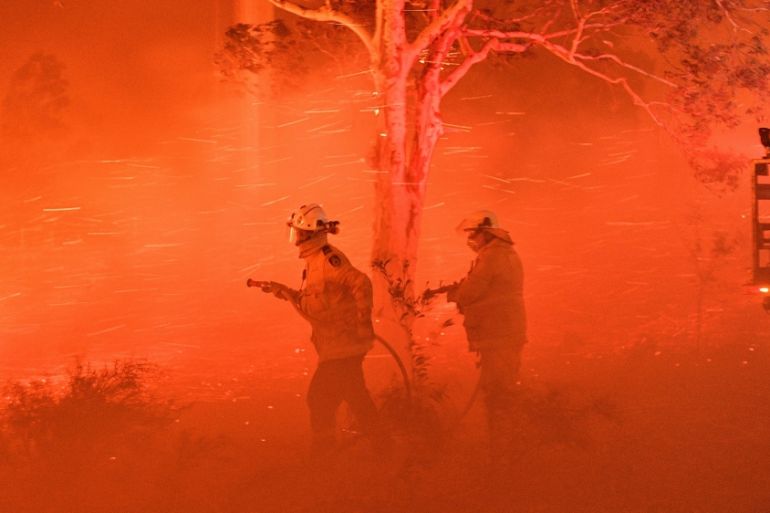Australia’s forest fires fanned by climate crisis: Study
National science agency says climate ‘overwhelming factor’ in driving fires, with fire seasons getting longer and affecting more areas.

New research by CSIRO, Australia’s national science agency, has found climate change has driven a significant increase in forest fires in the country over the past 30 years.
The study, published in Nature Communications, combined analysis of previous forest fire sites with eight drivers of fire activity including climate, fuel accumulation, ignition and fire management (prescribed burning).

It found fire seasons were getting longer and that blazes had become more common not only in alpine forests in the southern island of Tasmania but also in the tropical rainforests of Queensland in the country’s northeast.
CSIRO scientist, Pep Canadell, said the research was important for understanding how continued changes to the climate might affect future fire activity in a country that has long been susceptible to bushfires.
Keep reading
list of 4 itemsAustralia says China’s actions at odds with rhetoric of peace
Australia tables bill to protect people against ‘cancel culture’
Australia deploys troops to Solomon Islands as riots continue
“While all eight drivers of fire-activity played varying roles in influencing forest fires, climate was the overwhelming factor driving fire-activity,” Canadell said in a statement.
“The results also suggest the frequency of forest megafires are likely to continue under future projected climate change.”
Over the last 90 years, three of the four megafire years occurred after the year 2000, CSIRO said. A megafire year is defined as the cumulative burned area of forest over one year of more than 1 million hectares (2.47 million acres).
Fires in the southern hemisphere summer of 2019 and 2020 tore through 11.5 million hectares (28.4 million acres) of drought-stricken bushland and forest in southeastern Australia, creating apocalyptic orange skies and forcing trapped people to be evacuated by boat.
More than 30 people were killed and thousands of homes destroyed, with scientists estimating nearly three billion animals were killed or displaced.
The country’s weather bureau warned last year that Australia’s climate was expected to become hotter and drier, and blamed carbon emissions for the increase in extreme heat.

The Bureau of Meteorology’s (BoM) State of the Climate report said Australia’s climate had warmed on average by 1.44C (2.6F) since national records began in 1910, with the country experiencing its warmest year on record in 2019. The seven years from 2013 to 2019 all ranked among the nine warmest years ever, the BoM said.
CSIRO scientists identified climate change driven increases in fires against natural variability by basing their research on 32 years of satellite data and 90 years of ground-based datasets from climate and weather observations, simulating fuel loads for Australian forests.
The science agency noted that there had been a rapid increase in extreme heat events, while rainfall had declined in the southern and eastern regions of the continent.
When comparing the first half (1988-2001) with the second half (2002-2018) of the record studied, the research showed that the average annual forest burned area in Australia increased 350 percent, and 800 percent when including 2019.
In the same period, the research showed a five-fold increase in annual average burned area in the southern hemisphere winter and a three-fold increase in autumn, with spring and summer seeing a ten-fold increase.
“In Australia, fire frequency has increased rapidly in some areas and there are now regions in the southeast and south with fire intervals shorter than 20 years. This is significant because it means some types of vegetation won’t reach maturity and this could put ecosystems at risk,” Canadell said.
“Understanding these trends will help to inform emergency management, health, infrastructure, natural resource management and conservation.”